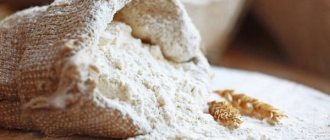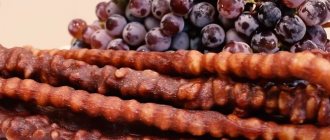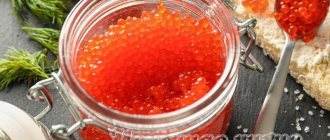Honey is one of the most useful products given by nature. It will be more beneficial if consumed in its raw form, i.e. in honeycombs. This product contains pollen, propolis, wax, and bruises. Its composition is rich in vitamins, amino acids, carotene, succinic acid, sucrose and other substances necessary for our body. Honey should be stored in honeycombs according to the rules, so it will not lose its freshness and beneficial properties.
Storage locations
Should be stored in dark, dry, cool places. Where to hide if you're going on vacation?
Where to store honey in combs? It is necessary to separate the concepts of “storage” and “active use”.
Fridge
Many people wonder whether it will be possible to preserve their delicacy at home using a refrigerator if there is no basement or cellar? Keep the temperature within +5 degrees. Get rid of excess moisture. Do you have dry freeze mode? There is nothing to worry about, the technology will take care of the safety of the bee treat.
Make sure that the container with comb honey is airtight, because honey absorbs vapors. You shouldn't store anything nearby. Fruits, cereals, salty products are bad neighbors.
Basement, cellar
Private houses have a cellar. Most are not suitable for storage. Temperature and humidity in the cellar air can spoil the bee product.
It is recommended to keep it in wooden barrels impregnated with wax. Barrels should not be placed near sauerkraut, cereals, salt and sugar. Another option is to hide the keg in the pantry on the bottom shelf.
Wardrobe, storage room
This option is suitable in winter. In summer it is better in the previous versions. In winter, put it on a shelf without light and you can forget about the product. Remember not to store food nearby. Make sure there are no insects in the pantry.
Product properties
In addition to the nectar itself, comb honey also contains a lot of bee products, each of which also has beneficial properties. For example, a combination of honey and pollen is used in the treatment of chronic and acute forms of nasopharyngeal diseases. Propolis has antibacterial properties, and the wax is saturated with retinol and a complex of minerals.
Did you know? According to one version of the origin of the word “honey,” its roots go back to the Hebrew language. Translation means “enchantment”, “witchcraft”.
- Honey, in addition to its immunomodulatory and strengthening effects, helps in such painful situations:
- in case of anemia, replenishes iron reserves, increases hemoglobin;
- cleanses the blood of toxins and bad cholesterol;
- promotes food digestion processes;
- improves metabolic processes, normalizes water-salt balance;
- improves the functioning of the liver and biliary organs;
- inhibits pathogenic microorganisms of the mucous membranes of the gastrointestinal tract, mouth, nose and eyes;
- improves the condition of allergies, asthma, migraine pain;
- calms the nervous system;
- used externally to treat skin and for cosmetic purposes.
Storage containers
Dishes, like storage space, require conditions. Honeycombs easily absorb fumes. It is necessary to take into account the material of the dishes so that the sweetness does not change its taste properties.
Best options:
- Wooden barrels impregnated with wax. (Birch, alder, linden or willow) (Coniferous and oak wood will be spoiled);
- Clay (Processed!);
- Enamel;
- Glass (Minus – transparency. Glass jars should not be left in the sun);
- Ceramics (Ceramic cookware may not be airtight);
- Birch bark.
Metal utensils are strictly prohibited due to oxidative processes. Do not store in iron or aluminum containers. Plastic is prohibited. Honey absorbs chemical mixtures and reacts with materials. Can be stored in food containers for no more than a year!
Beekeepers' recommendations
When buying honeycombs from experienced beekeepers, it’s a good idea to ask how to store them correctly.
So, some tricks from beekeepers:
- Small portions can be kept indoors, but not more than 6 months. At the same time, take into account the necessary lighting, humidity and temperature.
- In a private house, the beekeepers themselves most often keep the honeycombs in boxes made of natural wood, covering all the existing cracks with putty.
- It is advisable to transfer the purchased treat, which was in a plastic container from the seller, into another container at home. It is unknown how long the plastic was exposed to light.
- When stored in a wooden container, as mentioned above, pine needles are not suitable. It contains a lot of resinous and essential substances that can add bitterness.
- You should not store honeycombs in the freezer: at such low temperatures, the wax will burst and the nectar will leak out.
- If a plastic container is chosen as a container, divide the honeycombs into several parts and place them in different containers. The more closely the product is folded, the sooner it will stick together.
Honey is recognized as a healing product by both traditional and official medicine, and honeycomb nectar is doubly useful. When purchasing a treat, keep two things in mind: the honeycomb must be sealed, and the older the sweet, the darker the color of the honeycomb.
Storage conditions
What are the conditions for storing bee nectar?
Temperature
According to GOST, the standard temperature regime is -6 – +20 degrees. The optimal temperature for preserving delicacies is +5 – +10 degrees. When heated to +25 degrees, it will become darker, the structure will change, and the taste will become bitter.
Freezing will have less effect. -15 degrees – the nectar will become sugary and harden. Defrost only with slow, gradual defrosting. Re-freezing is strictly prohibited.
With a sharp change in temperature, honey may crystallize unevenly.
Moisture
The average humidity in the storage room is 35%. Storage conditions depend on the type. For example, acacia nectar tolerates high humidity, while another tolerates low humidity. Conclusion: store in dry places. Even if the nectar can withstand high humidity, don't take any chances.
In winter, air humidity rises. The main thing is to keep it within limits. If the limit was exceeded, move it to a place where moisture could not penetrate.
sunlight
Upon contact, it destroys beneficial vitamins and enzymes and destroys the structure. There is no need to worry about leaving it in the sun for a day. It will begin to deteriorate on the 5th day of exposure to the sun.
The absence of sunlight will allow the delicacy to stand for a long time. Overheating in the sun will begin to turn into caramel, becoming darker and thicker. Afterwards the honey is no longer suitable.
Insects
The main pests are insects. Wax moths are a frequent visitor to honey storage areas. A nocturnal butterfly capable of laying up to 2 thousand eggs! After hatching, the larvae begin to eat the wax, while weaving their way into a web. 1 larva can destroy up to 500 cells!
Where to store honey in honeycombs at home?
The best place to store comb honey is in a dark, cool basement with good ventilation. Such a cellar can be in a country house or in a villager’s house. And in a city apartment, you will have to allocate a shelf in the refrigerator to store delicacies, where foreign odors and direct sunlight do not penetrate.
The temperature in the refrigerator should be no lower than 2-3 degrees and no higher than 10 degrees Celsius. The natural bee product does not tolerate heat, frost and sudden temperature changes. With such cataclysms, unfortunately, the sweet nectar will be spoiled!
What kind of cookware is best to use?
Our wise grandmothers and great-grandmothers kept honeycombs in wooden tubs. Modern housewives prefer glass, clay or enamel containers with tight lids. It is important to take into account that the natural product is not friendly with iron and aluminum, so such utensils should absolutely not be used.
Today, special plastic packaging has come to the aid of beekeepers and buyers of honey treats. They are made from food-grade plastic, very light and airtight. In such containers, sweet nectar is not afraid of high humidity and harmful fungi. The lids on the dishes should be tightly closed so that the honey does not absorb moisture from the environment.
What can spoil the product?
It is important for housewives who purchased a natural elixir in honeycombs to know what factors can spoil the product:
- High or low temperature can completely destroy the beneficial properties;
- Air humidity should not exceed 60%, otherwise the honey will ferment;
- Mold grows in a damp room and spoils a valuable product;
- Sunlight destroys natural cells and their contents;
- The wax moth multiplies quickly in honeycombs and eats up all the delicious sweetness in 7 days;
- Wrong utensils will damage the honeycomb;
- Odors from the refrigerator are easily absorbed into the wax cells, and the product loses its benefits.
A diligent housewife will take into account all the advice and save the honey for future use. In autumn and winter, sweet cells will save you from colds. All family members will be able to eat them like natural sweets, and even the smallest household members will enjoy the sticky “chewing gum.”
Previous Products and dishesHow long can natural honey be stored: shelf life and correct conditions Next
Foods and dishesHow to preserve eggs without refrigeration
Best before date
How long does honeycomb nectar last? According to GOST, the maximum period is 1 year. But with the right approach, the shelf life of nectar is unlimited.
Professional beekeepers can keep bee products in good condition for more than 10 years while maintaining all the properties of nectar! Condition: the product is real, without impurities. Beekeepers are kept in wooden containers soaked in wax.
If you are not sure that you have approached the storage method correctly, do not keep it for more than 18 months (one and a half years). Inexperienced people make the mistake of mistaking candied honeycomb for unsuitability.
It is important to understand! If honey does not change color during long-term storage and remains liquid by winter, it is not real.
The chemical composition allows honey to retain its properties for several hundred years and be suitable for food! During excavations in Ancient Egypt, archaeologists found containers of honey that were several thousand years old and suitable for consumption.
First of all, honey is sugar. Secondly, the natural form contains too little moisture. Not all microorganisms are capable of surviving in it. They are “suffocating.” For it to spoil, there must be something that can spoil it. Insects, moisture, vapors, mold. The most valuable honey is aged for 3-4 years.
How long does honey last in honeycombs?
Under ideal storage conditions, honey cells can “live” for an unlimited number of years. They wrote that sealed honeycombs with delicacies were found in the tombs of the pharaohs, and they were ready for consumption. For a natural product, it is difficult to create conditions where light, moisture and living microorganisms do not penetrate. However, through research we found out how long honey can be stored under different conditions:
- At room temperature – no more than 6 months;
- In a home refrigerator – up to 1 year;
- At a temperature of 3-9 degrees, without access to sunlight and moisture - 2-3 years;
It is important to consider that even under favorable storage conditions, the beneficial properties of the product decrease annually. Therefore, it is advisable to use comb honey within 12 months from the date of packaging.
Solving cell storage problems
You can divide all cells into several groups:
- Those that do not contain food are dry.
- Those with a sufficient amount of beebread and honey.
Also, white honeycombs are distinguished separately, they are young and dark, which are outdated. The latter with honey are very difficult to preserve; moths love to infest them. The beekeeper should periodically dry them and throw them away.
There is rarely a problem with dry white honeycomb. It needs to be stored hanging, it can be placed under a canopy. Do not forget that they need to be covered with a special net that will protect against birds and other parasites. Frames will only be stored if normal air ventilation is ensured. When the frames are expanded, the shelf life increases.
Ginger tincture with honey and lemon
Half-frames with drying materials should be stored in a special spacious box in winter. The honeycombs that the beekeeper did not have time to throw away must be thoroughly dried in the fall and stored in a honeycomb storage facility; they can be used as spare hives, free and empty boxes, they are placed in a shady place, there should be no cracks in them.
Bees do not have access to storage facilities, but you should always be aware of rodents that can damage products.
The honeycombs need to be sorted, white dry material, spare frames and those that have not been written off stand out. Autumn and winter are the seasons when wax moths are inactive. In the spring you need to be careful, double-check everything carefully. When the old honeycombs are black, throw them away and reheat them. Others need to be moved apart to protect them from parasites.
Additionally, you can use the following methods - place a container in the hive, add vinegar to it; wax moths are afraid of the smell. Keep in mind that this method negatively affects the condition of the frame wire; it begins to rust quickly and may break. You can repel moths with the scent of lavender, wormwood or special preparations.
Old and proven methods
Nowadays, honey stored in honeycombs is used for:
- Strengthening the immune system.
- Appetite stimulation.
- Increased hemoglobin in the blood.
- Has a positive effect on the physical and mental development of children.
- Restores normal metabolic process.
- Helps with thyroid and kidney diseases.
- Normalizes blood pressure.
Despite all its usefulness, honey and its individual components can cause a serious allergic reaction - this is worth taking into account, and it is best to do preliminary tests in the hospital.
Among other things, it helps cleanse the body of toxins and is used to prevent diseases of the respiratory and cardiovascular systems. Despite the high sugar content, honey in combs is used to combat tooth decay and nicotine addiction. That’s why you need to store honeycombs correctly, only then the effect of their use will be much stronger and more noticeable.
What can spoil honey?
Despite the fact that the nectar is stored sealed, you might think that nothing threatens it. There is some truth in this, because propolis is a natural preservative that can extend the shelf life of honey in honeycombs up to three years. But, external and internal “enemies” can hinder this process.
| Vitamin name | Honey | Perga |
| B1 | 0,044 | 0,6 |
| B2 | 0,026 | 1,7 |
| PP | 0,11 | 10 |
| B6 | 0,01 | 0,9 |
| B5 (pantothenic acid) | 0,055 | 3 |
| Biotin | 0,066 | 25 |
How to properly store honeycombs and what conditions need to be created to preserve all the beneficial properties of the bee product will be discussed in the following chapters of our review article.
Only natural product
Many buyers mistakenly believe that honey in honeycombs is usually only natural, because counterfeiting such a product is quite difficult and even impossible. But such assumptions, alas, are erroneous or partially incorrect. Unscrupulous beekeepers may intentionally feed bees sugar syrups when they should be flying and collecting flower nectar.
How to make candles from wax, master class
Deliberate intervention in this process leads to the fact that honey contains a huge amount of sugar and an insignificant amount of much-needed enzymes and microelements. It is very difficult to distinguish such a “high-quality” fake. At first, the aroma and taste of a fake may be practically no different from a natural product, but over time everything will be revealed, but it will be too late.
Plus, improper storage and collection of honeycombs can also affect the quality of the product. That is why you simply must know how honey is stored so as not to fall for the bait of unscrupulous beekeepers, if you can call them that.
Why does honey separate, foam, bubble, and darken during storage?
A good product should not bubble or foam during storage. This indicates that the product contains a lot of moisture and the honey was diluted. In this case, the product often ferments due to the presence of sugar syrup and other impurities in it. This honey may smell bad. It cannot be eaten. It is best to cook honey cakes or make mead. Consuming this honey may cause diarrhea and indigestion.
Honey separation indicates that the product is not of good quality. This often happens when stored incorrectly. There is nothing wrong if after two weeks of storage a white foam of small bubbles appears. This is the air that escapes when the honey compacts.
Instructions for distilling honey:
- If you notice that the honey has separated into two parts, with crystals in one, and the second on top is liquid and foam has appeared, then this indicates fermentation processes.
- Such honey can be saved; to do this, it is necessary to remove pathogenic bacteria. To do this, skim off the foam with a spoon and pour the entire product into an enamel bowl.
- Place the pan in a water bath and heat with constant stirring for 1 hour. Maximum heating temperature 60 °C.
- After this, pour the nectar into a jar and close the lid. Do not allow moisture to get into the honey.
Why does honey separate, foam, bubble, and darken during storage?











